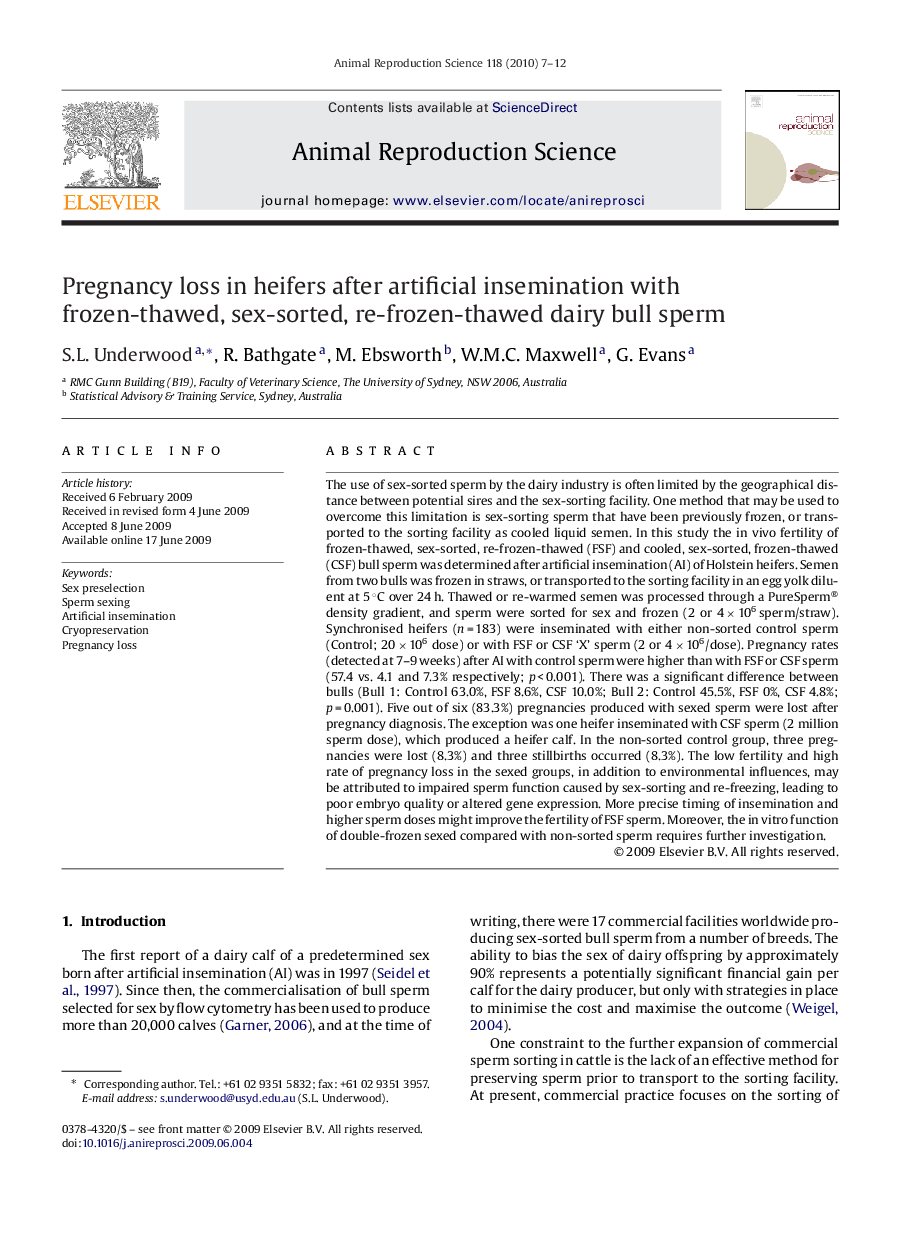| کد مقاله | کد نشریه | سال انتشار | مقاله انگلیسی | نسخه تمام متن |
|---|---|---|---|---|
| 2073870 | 1079069 | 2010 | 6 صفحه PDF | دانلود رایگان |

The use of sex-sorted sperm by the dairy industry is often limited by the geographical distance between potential sires and the sex-sorting facility. One method that may be used to overcome this limitation is sex-sorting sperm that have been previously frozen, or transported to the sorting facility as cooled liquid semen. In this study the in vivo fertility of frozen-thawed, sex-sorted, re-frozen-thawed (FSF) and cooled, sex-sorted, frozen-thawed (CSF) bull sperm was determined after artificial insemination (AI) of Holstein heifers. Semen from two bulls was frozen in straws, or transported to the sorting facility in an egg yolk diluent at 5 °C over 24 h. Thawed or re-warmed semen was processed through a PureSperm® density gradient, and sperm were sorted for sex and frozen (2 or 4 × 106 sperm/straw). Synchronised heifers (n = 183) were inseminated with either non-sorted control sperm (Control; 20 × 106 dose) or with FSF or CSF ‘X’ sperm (2 or 4 × 106/dose). Pregnancy rates (detected at 7–9 weeks) after AI with control sperm were higher than with FSF or CSF sperm (57.4 vs. 4.1 and 7.3% respectively; p < 0.001). There was a significant difference between bulls (Bull 1: Control 63.0%, FSF 8.6%, CSF 10.0%; Bull 2: Control 45.5%, FSF 0%, CSF 4.8%; p = 0.001). Five out of six (83.3%) pregnancies produced with sexed sperm were lost after pregnancy diagnosis. The exception was one heifer inseminated with CSF sperm (2 million sperm dose), which produced a heifer calf. In the non-sorted control group, three pregnancies were lost (8.3%) and three stillbirths occurred (8.3%). The low fertility and high rate of pregnancy loss in the sexed groups, in addition to environmental influences, may be attributed to impaired sperm function caused by sex-sorting and re-freezing, leading to poor embryo quality or altered gene expression. More precise timing of insemination and higher sperm doses might improve the fertility of FSF sperm. Moreover, the in vitro function of double-frozen sexed compared with non-sorted sperm requires further investigation.
Journal: Animal Reproduction Science - Volume 118, Issue 1, March 2010, Pages 7–12